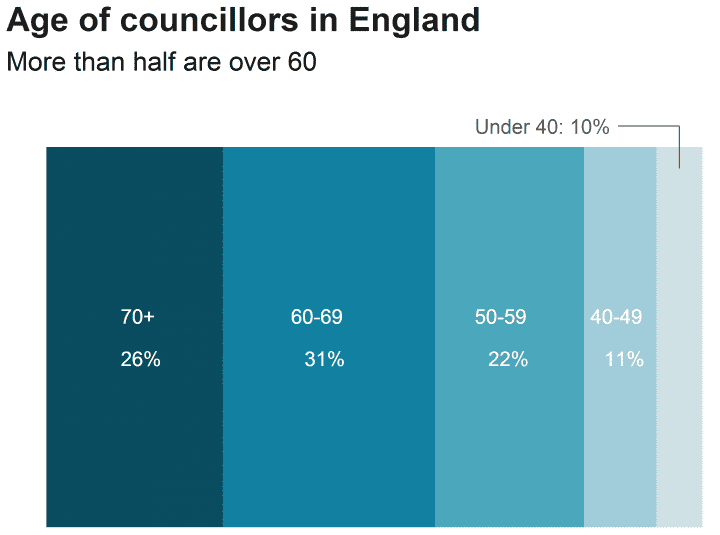CORRECTION: This piece was updated on 27 April at 11:00. It originally stated the date for the local elections was 3 May and has now been corrected to 2 May.
Councillor demographics are worse than we expected. Local elections are happening on 2 May, but the people running are unrepresentative of the public.
Very old
In England, 57% of councillors are over 60 years old:

And 79% of them are over 50. This is even worse than parliament where the average age of an MP is 50.
What’s more, ‘under 40’ has its own councillor category and still only makes up 10%. This is a problem because it means local government does not represent the people.
White
The picture doesn’t improve when you account for ethnicity. 95.8% of councillors are white and this figure has remained nearly stagnant for 15 years – with less than a 1% decrease since 2004. By comparison, the overall population is 86.5% white.
Male
There has been greater movement towards a representative number of female candidates. But at 36%, the proportion is still way off representing the public. The 2018 figure is an increase from 29% in 2004.
The Fawcett Society’s Andrew Bazeley said:
The pace of change is still far too slow when it comes to getting more women on to councils across the country – and more diverse representation in terms of ethnicity, age, and disability too.
And, speaking about the general lack of representation, a local government association (LGA) spokesperson said:
It is vital that the make-up of councils reflects their communities and their experience. The LGA has been constantly working with councils towards increasing diversity and inclusion.
Council elections are about to happen across England in 248 areas. There are also six mayoral positions on offer. But democracy is supposed to be representative. So we need to ensure that politicians demographically represent the people. Because right now we’re way off.
Featured image via secretLondon123/ WikiCommons
















